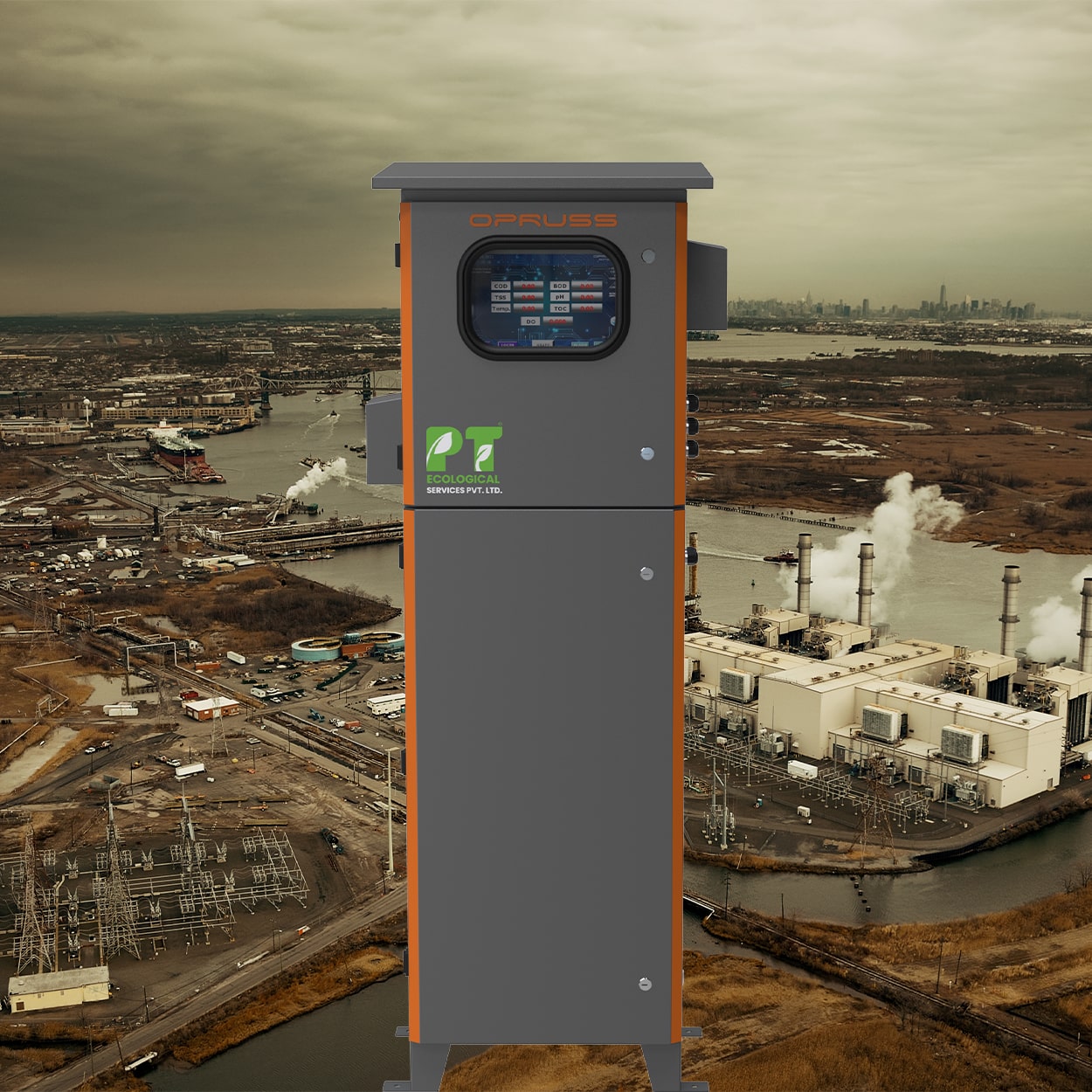Industries today are under tremendous pressure to strike a balance between sustainability and growth. Global environmental regulations are getting stricter, and industries are expected to make sure their operations don’t negatively impact the environment. Monitoring the discharge of industrial wastewater has emerged as one of the most important components of environmental compliance. This is where innovative solutions like a online monitoring system for ETP are essential.
Many industries in India are required to install OCEMS (Online Continuous Effluent Monitoring System) in order to maintain the quality of their effluent, as mandated by regulatory bodies such as the Central Pollution Control Board (CPCB) and State Pollution Control Boards (SPCBs). Industries can guarantee compliance, lessen their impact on the environment, and establish a reputation for ethical business practices by implementing these intelligent, automated systems.
The Need for Water Pollution Monitoring Systems in Industries
Wastewater from industrial operations frequently contains dangerous contaminants like chemicals, suspended solids, heavy metals, and oils. This wastewater has the potential to seriously harm lakes, rivers, and groundwater supplies if it is not treated or is not treated sufficiently.
Businesses can keep a close eye on the quality of wastewater coming out of their facilities by installing a water pollution monitoring system. Real-time data delivery from these systems eliminates the need for speculation or postponements in identifying non-compliance. Industries can use automated solutions that record data around-the-clock and immediately notify users when parameters exceed acceptable limits in place of manual sampling.

How Environmental Compliance Is Strengthened by OCEMS
An OCEMS is a complete solution created to guarantee accountability and transparency, not just a monitoring tool. OCEMS gives industries access to real-time data that is directly connected to regulatory portals by fusing cutting-edge sensors with software platforms.
Businesses benefit from having OCEMS in place in the following ways:
- Constant, real-time effluent water quality monitoring.
- For transparency, data is automatically transferred to CPCB and SPCB servers.
- Prompt identification of irregular discharges or anomalies.
- Removing human error from manual data collection.
- Better decision-making grounded in reliable, consistent data.
These advantages help to optimize wastewater treatment procedures in addition to protecting companies from fines.
Benefits of Water Pollution Monitoring Systems in Real Time
There are numerous benefits for the entire industry when a real time water pollution monitoring system is implemented. These systems help industries stay ahead of compliance requirements by acting as a proactive mechanism.
Among the main benefits are:
- Ensuring regulatory standards are followed with zero errors.
- Lowering the possibility of fines, penalties, or plant closures as a result of non-compliance.
- Enhancing brand image and supporting corporate sustainability initiatives.
- Reducing operating expenses through treatment plant performance optimization.
- Supporting data-driven tactics for improved management of water resources.
Industries show their dedication to sustainable business practices and satisfy compliance requirements by investing in these systems.
Online Monitoring Systems’ Function in ETP
The performance of treatment facilities is specifically monitored by a online monitoring system for ETP (Effluent Treatment Plant). Before being released into the environment, industrial wastewater must be treated by ETPs. However, there is no way to know if these plants are consistently effective without a strong monitoring system.
An online monitoring system for ETP allows industries to:
- Continuously monitor the quality of treated water.
- Verify that the effluent satisfies acceptable discharge standards.
- Find treatment process breakdowns or inefficiencies.
- Reduce operating expenses and chemical usage.
- Obtain constant assurance of regulatory compliance.
Online monitoring systems for ETP are therefore a crucial component of contemporary wastewater management plans.
Industrial Water Monitoring’s Future
Automation and data-driven decision-making will play an increasingly important role as industries transition to smart manufacturing and digital transformation. The future of compliance management will be completely reshaped by the incorporation of cloud-based, IoT, and AI technologies with water pollution monitoring systems.
In the upcoming years, industries can anticipate:
- More intelligent predictive analytics to identify pollution hazards early.
- The smooth integration of enterprise resource planning (ERP) software with monitoring systems.
- AI algorithms are used to suggest operational enhancements for ETPs.
- A rise in the use of cloud platforms for centralized access to data.
- A broader use of automated systems by the government to enforce regulations.
Conclusion
Industry adherence to water quality regulations is now required and essential for long-term viability. Businesses can guarantee zero-error compliance and protect the environment by implementing cutting-edge technologies like OCEMS.
Protecting the environment, increasing operational effectiveness, and fostering stakeholder trust are all reasons to invest in a water pollution monitoring system. Real-time, automated monitoring will be the key to long-term, sustainable industrial growth as technology develops.

